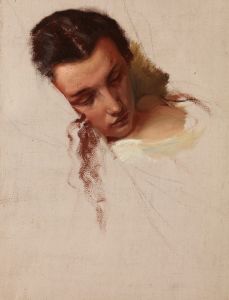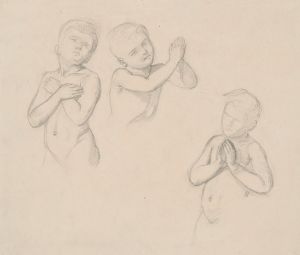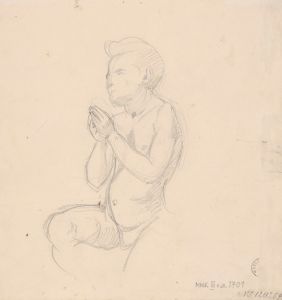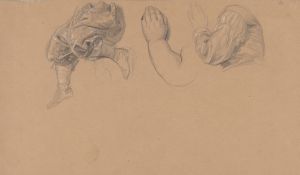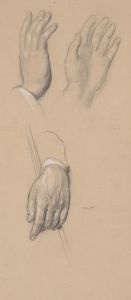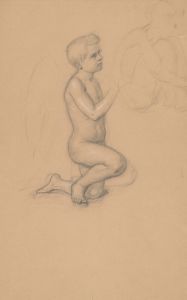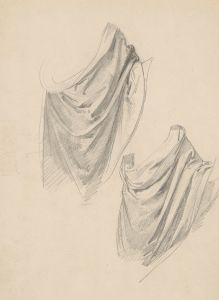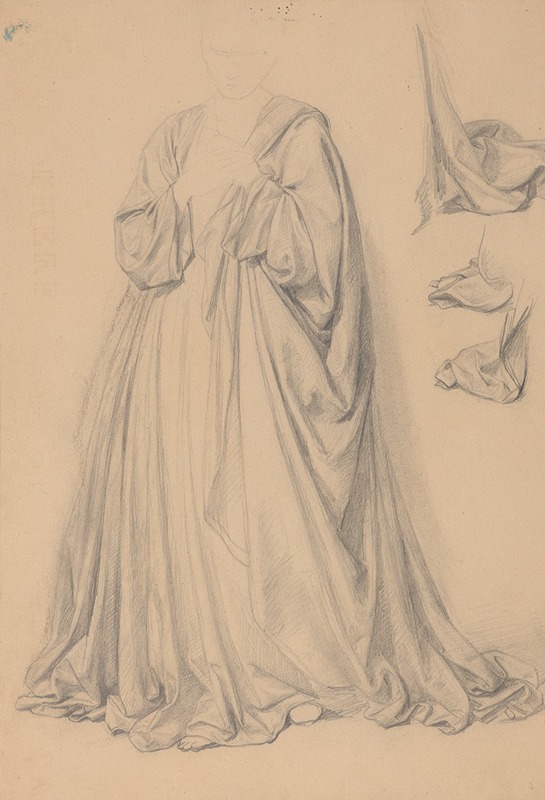
Study of Mary’s robes for the painting ‘The Immaculate Conception of the Blessed Virgin Mary’
A hand-painted replica of Józef Simmler’s masterpiece Study of Mary’s robes for the painting ‘The Immaculate Conception of the Blessed Virgin Mary’, meticulously crafted by professional artists to capture the true essence of the original. Each piece is created with museum-quality canvas and rare mineral pigments, carefully painted by experienced artists with delicate brushstrokes and rich, layered colors to perfectly recreate the texture of the original artwork. Unlike machine-printed reproductions, this hand-painted version brings the painting to life, infused with the artist’s emotions and skill in every stroke. Whether for personal collection or home decoration, it instantly elevates the artistic atmosphere of any space.
Józef Simmler, a notable Polish painter of the 19th century, is renowned for his historical and religious paintings. One of his significant works is "The Immaculate Conception of the Blessed Virgin Mary," which reflects his mastery in depicting religious themes with a deep sense of devotion and artistic precision. The study of Mary’s robes for this painting is an essential aspect of Simmler’s preparatory work, showcasing his attention to detail and commitment to authenticity in religious iconography.
Simmler was born in 1823 in Warsaw, Poland, and he pursued his artistic education in several European cities, including Dresden, Munich, and Paris. His exposure to various art movements and techniques during his studies influenced his style, which is characterized by a blend of realism and romanticism. Simmler’s works often focus on historical and religious subjects, and he is particularly known for his ability to convey emotion and narrative through his paintings.
"The Immaculate Conception of the Blessed Virgin Mary" is a testament to Simmler’s skill in religious art. The doctrine of the Immaculate Conception, which holds that Mary, the mother of Jesus, was conceived without original sin, has been a popular subject in Christian art. Artists have long been inspired to depict Mary in a manner that reflects her purity and divine grace. Simmler’s interpretation of this theme is no exception, as he sought to capture the essence of Mary’s sanctity through his depiction.
In preparing for the final painting, Simmler conducted detailed studies of Mary’s robes. These studies were crucial in ensuring that the garments not only adhered to the traditional iconography associated with the Virgin Mary but also conveyed a sense of movement and ethereal beauty. The robes are typically depicted in shades of blue and white, colors traditionally associated with Mary, symbolizing her purity and heavenly nature. Simmler’s study would have involved careful consideration of the drapery, folds, and texture of the fabric, aiming to achieve a lifelike yet idealized representation.
Simmler’s attention to detail in the study of Mary’s robes reflects his broader approach to painting, where meticulous preparation and an understanding of historical and religious contexts were paramount. By focusing on the robes, Simmler was able to enhance the overall composition of the painting, ensuring that every element contributed to the portrayal of Mary’s divine nature.
The final painting, "The Immaculate Conception of the Blessed Virgin Mary," is celebrated for its harmonious composition and the serene expression of the Virgin. Simmler’s ability to blend traditional religious symbolism with his unique artistic vision results in a work that resonates with viewers, inviting them to contemplate the spiritual significance of the Immaculate Conception.
Józef Simmler’s legacy as a painter is marked by his dedication to capturing the essence of his subjects, whether historical figures or religious icons. His study of Mary’s robes for "The Immaculate Conception of the Blessed Virgin Mary" exemplifies his commitment to artistic excellence and his deep respect for the religious themes he portrayed.





